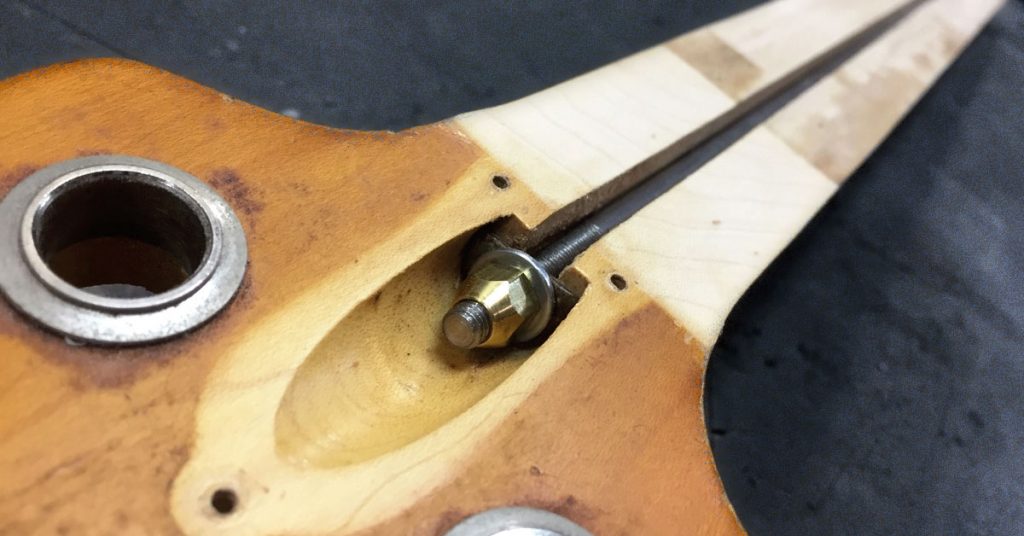Truss rods are a fantastically simple innovation for addressing multiple neck & action issues. If it’s so simple though, why is this article necessary? Well, after receiving an email from a first-time builder wondering about the plausibility of creating an entirely aluminum guitar, the need to break things down visually became clear.
There are multiple truss rod ‘styles’, but all of them follow the same basic mechanical principles. They are embedded in the neck, span the length of the nut to neck’s end, and have a mechanism for increasing tension between the end points. That mechanism makes it possible for the neck’s (normally flat) plane to be adjusted.

You’ve probably seen many diagrams like the one above – you’ll note the red arrow pointing to a “natural” position with a surrounding “ideal” setting area. That’s what this article is all about really. So let’s talk about that very quickly before we look at the string action in relation.
This diagram assumes that your guitar’s neck is not suffering from any twisting or humidity-related warping.
The ideal shape for your neck is not straight. Many players learn early on that a truss rod is just meant for combatting warping, and naturally assume that a straight neck is what we’re trying to maintain. In actuality, we want a neck with a very slight concave (or upward bow).
When an electric guitar is strung up and tuned, it has about 200lbs of tension pulling the neck toward the bridge. While the neck’s wood does an excellent job of resisting this amount of tension, it does flex a tiny bit. This default amount of concave given by the string tension is marked as the “natural” position in the diagram.
It just so happens that the vibrating strings will benefit from this slight concave in all of the right positions. This is illustrated below.
So, the ideal position for a truss rod’s setting is usually hovering around the place a wooden neck under tension would settle.
Before carrying on, if you’d like to know what this hydroscopic ‘breathing’ is that’s responsible for warping necks, you can take a look here.
A Quick Pictorial Guide to Truss Rod Settings & Action
(not regarding adjustments for hydroscopic movement)
